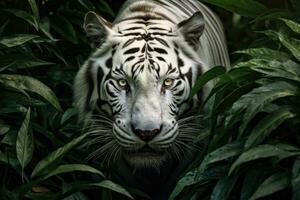Animal prints have captivated artists and designers for centuries, influencing fashion, art, and even home decor. In the world of nature photography, capturing the beauty of animal prints in the wild can be a rewarding and visually stunning experience. From the intricate patterns of a zebra's stripes to the majestic spots of a leopard, animal prints offer a unique and captivating look into the natural world.
The Art of Animal Print Photography
Understanding Animal Prints
- Animal prints serve as a form of camouflage, helping animals blend into their surroundings and evade predators.
- Each animal print is unique and serves a specific purpose in the animal kingdom.
- Patterns can range from stripes and spots to scales and patches, each serving a specific function.
Capturing Animal Prints in the Wild
- Patience and observation are key when photographing animal print pictures in their natural habitat.
- Study the behavior of the animal to anticipate their movements and capture the best shots.
- Focus on the details of the animal print, capturing the intricate patterns and textures up close.
Animal Prints Around the World
African Safari
- The plains of Africa are home to some of the most iconic animal prints, including zebras, leopards, and cheetahs.
- Photographers can capture the striking contrast of a zebra's stripes against the golden savannah grasslands.
- The elusive leopard's spots blend seamlessly into the dappled sunlight of the African bush.
Amazon Rainforest
- The lush rainforests of the Amazon are teeming with a variety of animal prints, from jaguars to poison dart frogs.
- Photographers can capture the vibrant colors and intricate patterns of the poison dart frog's skin.
- The stealthy jaguar's rosette pattern provides excellent camouflage in the dense foliage of the rainforest.
Techniques for Capturing Animal Prints
Use of Lighting
- Experiment with natural light to enhance the textures and colors of animal prints.
- Soft, diffused light can bring out the subtle details of a zebra's stripes or a snake's scales.
- Backlighting can create a dramatic effect, highlighting the patterns of an animal print against a dark background.
Composition and Framing
- Consider the rule of thirds when composing your shots, placing the animal print off-center for a more dynamic composition.
- Experiment with different angles and perspectives to highlight the unique patterns and textures of the animal print.
- Use a shallow depth of field to blur the background and draw focus to the animal print in the foreground.
Preserving Animal Prints Through Photography
Conservation and Awareness
- Photography can help raise awareness about the beauty and importance of animal prints in nature.
- By capturing these prints in stunning detail, photographers can inspire others to appreciate and protect wildlife habitats.
- Support conservation efforts by showcasing the unique beauty of animal prints and the animals that wear them.
Educational Outreach
- Use your photography to educate others about the different types of animal prints and their significance in the animal kingdom.
- Share your knowledge and passion for animal prints through workshops, presentations, and online platforms.
- Encourage others to explore the wild side through nature photography and appreciate the intricate beauty of animal prints.
In conclusion, animal prints offer a fascinating glimpse into the world of wildlife photography, showcasing the intricate beauty and diversity of patterns found in nature. By understanding the art of animal print photography, exploring different regions around the world, and using creative techniques to capture these prints, photographers can create stunning images that celebrate the natural world. Through conservation efforts and educational outreach, photographers can also help raise awareness about the importance of preserving wildlife habitats and the beautiful animal prints that adorn the creatures within them.

